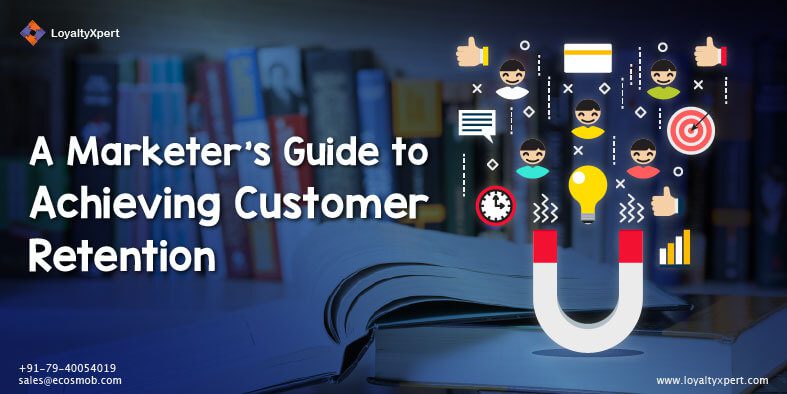Everyone in the customer services industry is familiar with the quote, ‘Make a customer, not a sale’ by Katherine Barchetti. The strong emphasis on customer retention is a common motto of most successful businesses that have stretched far and beyond to gain customers.
But their game simply doesn’t end at customer acquisition. It takes continuous efforts to ensure an existing customer is satisfied and remains loyal to the brand for a long period. In short, it is called customer retention.
Importance of Customer Retention
Customer retention is important for consistent revenue and useful in marketing and promotional processes as the brands already have sufficient insights into customers’ behaviours and expectations to take actions that help them maximize sales and boost profits. Moreover, the cost of acquiring a new customer is higher than improving the experience and satisfaction levels of an existing client.
According to research by Harvard Business School, a five% increase in customer retention could boost profits by 95%! Interestingly another study found that if a customer engaged in a buying activity with a brand, there is about a 60% chance for repurchase by the same customer. Businesses have adopted multiple models and strategies to secure their customer base and not lose them to rival brands with customer and brand loyalty plans and programs. However, this area too is plagued with risks and constraints that can drive brands to take measures that are ineffective.
Nearly 57% of marketers that adopt loyalty programs are seldom confident about its impact on customer retention.
8 Proven Strategies to Boost Customer Retention
To avoid commonly made mistakes and help businesses become better at fostering long-standing relations with customers, below is a step-by-step process for achieving customer retention:
1. Create a Customer Onboarding Plan
An onboarding plan with all the features that get the user or customer acquainted with the product or service is the very first step to creating a great impression. Today’s customers prefer self-service models and onboarding plans that include onboarding calls, welcome emails, instructions and guidance from customer services teams. These methods not only help customers easily use the product or service but also increase customers’ trust in the brand or business by facilitating direct interactions.
2. Gain Customers’ Trust
Customers trust a brand or business based on the quality of services or products, values systems, customer support and other many other factors. Modern online customers also provide brands and businesses with their personal information during the account creation or registration process. It is the foremost duty of businesses to live up to the customers’ expectations by ensuring that their personal information is secured and will not be misused. Businesses can also gain customers’ trust through ethical practices and supporting a social cause or initiative.
3. Encourage Customers’ to Interact and Offer Opinions:
Social media is a powerful platform to not only reach a large audience segment but also allow customers to share and express their opinion about a brand or its products. Customers’ reviews and feedback shared on social media are also useful in increasing online visibility and attracting new customers. In many cases, it serves as an effective source to understand customers’ brand perceptions and expectations to increase their experience and satisfaction levels.
4. Offer Loyalty Programs and Rewards:
Reward programs and loyalty points for regular customers make them feel acknowledged and appreciated. Loyalty plans and rewards also encourage customers to engage in sales activities thereby increasing revenue and keeping them interested in the brand and its products or services for longer durations. Loyalty programs and rewards can be coupled with discounts and promotional strategies to build trust and show appreciation for customers’ engagement with the brand.
5. Offer Personalized Support and Services:
A study found that many customers expect personalized experiences but most businesses are missing the opportunity. Personalization of services increases customers’ buying impulses and brand estimation, leading to an increase in revenue and loyalty. Offering personalized services and customer support also increases customer satisfaction and experience with the brand. Brands can develop long-term relations with customers by sending them personalized messages, emails or making calls for feedback and quickly responding to customers’ queries.
6. Make Metric-based Marketing Decisions:
Using metrics-based reports to regularly track customers’ buying activities and identify triggers and motivators can help brands make informed marketing decisions that are financially rewarding and increase engagement with customers. This also helps businesses to predict the potential performance of a marketing campaign, pricing and or promotional strategy and keep tab on customers’ responses and reactions. Insights on these factors are useful in understanding the existing customer base in order to serve them better.
7. Use Smart Pricing Strategy:
It is not uncommon to find that customers switch brands with better prices. Marketers, therefore, need to build smart pricing models that do not push customers away from rival brands.
8. Offer Proactive and Courteous Customer Service:
Efficient and quick customer services team that is polite and courteous help establish a healthy bond between businesses and customers by answering their queries and resolving issues on the go.
If you have any queries about building a unique loyalty program, reach our experts today.

